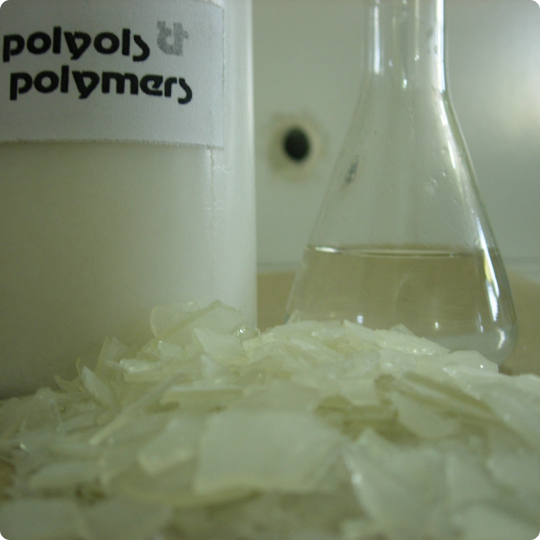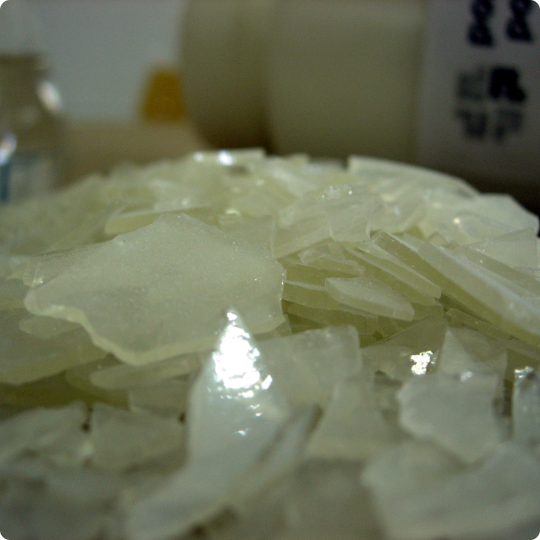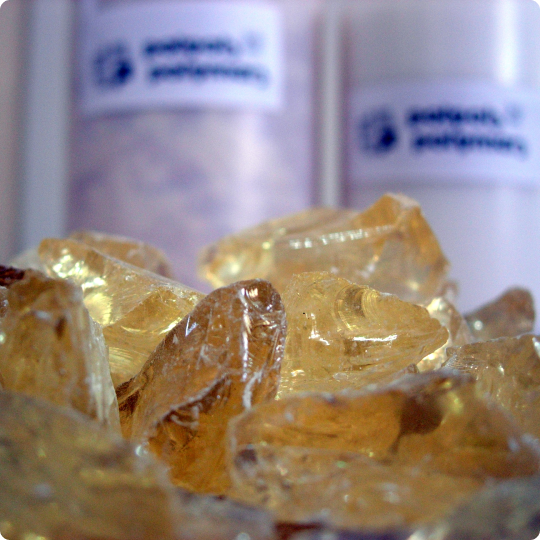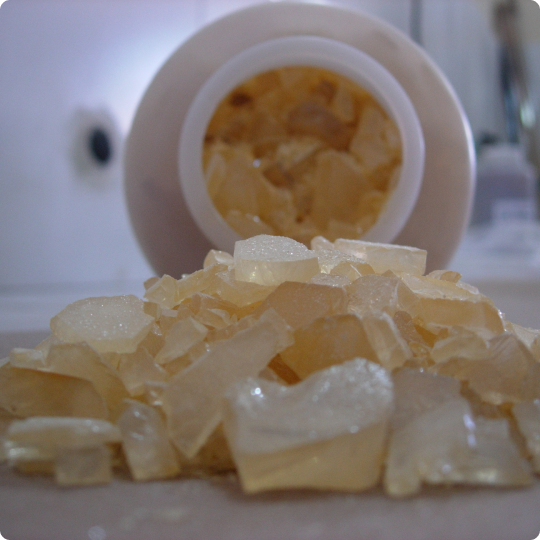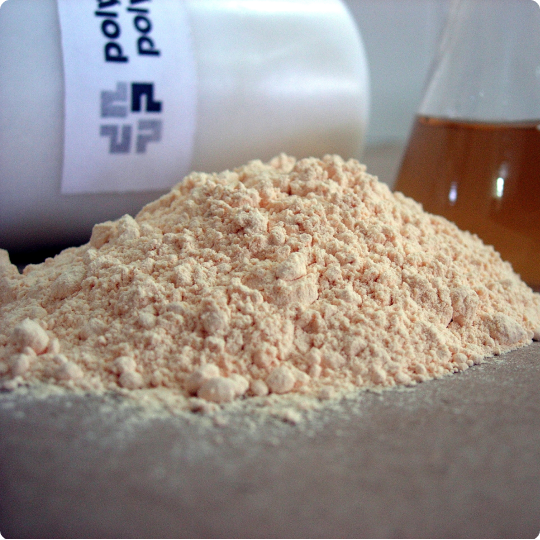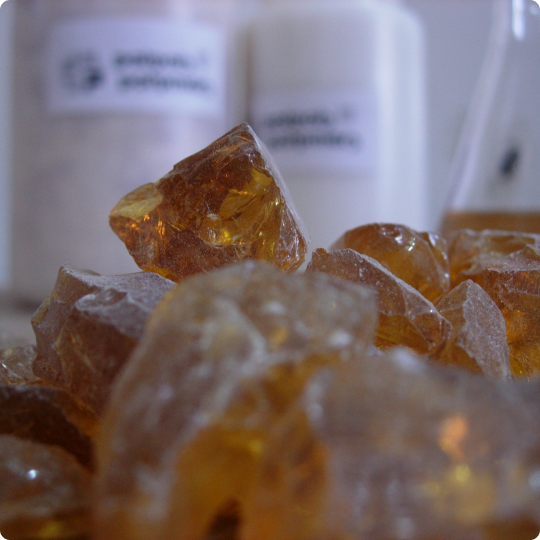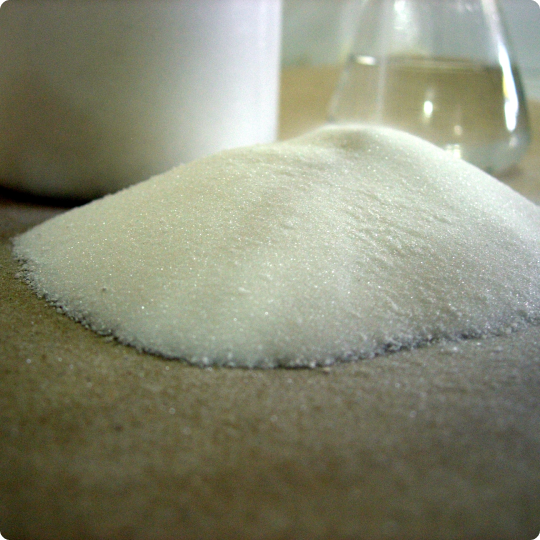POLYTONE®
Cyclohexanone Formaldehyde Ketonic Resin

About POLYTONE® K-Series
POLYTONE® K Series Resins are neutral, unsaponifiable, cyclohexanone aldehyde resins of exceptional lightness in colour and lightfastness. It is a condensation product of cyclohexanone and formaldehyde to give a solid product, which includes carbonyl and hydroxyl groups Its wide compatibility and good solubility cause it to be used in most diverse coating systems to enhance drying properties, harness, gloss, and adhesion as well as solid content. It displays good pigment-wetting properties and increases yield of coating systems. It is suitable for all types of industries, including nitrocellulose paints where it improves polishing characteristics and adhesion. In printing inks, it enhances adhesion, imparts gloss, improves drying properties, and increases solids content, where it is used in maleic resins, alkyd resins, nitro cellulose, and polyvinyl butyral.
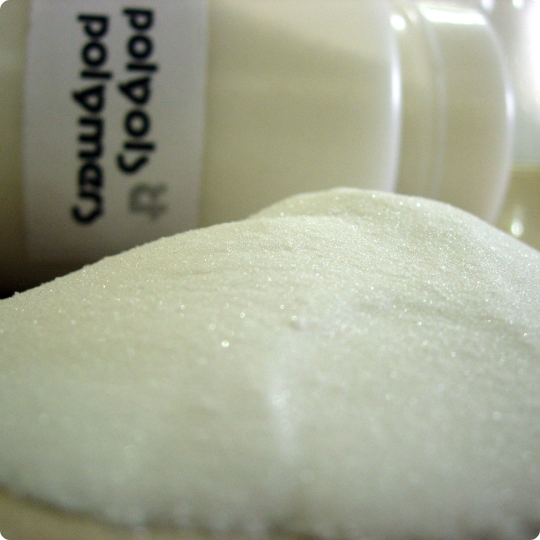
Type
Polyketone
Ketone Cyclo Aliphatic
Aldehyde Resin
Chemistry
Cyclohexanone Aldehyde
Cyclohexanone Formaldehyde
Ketone Formaldehyde
Ketone Aldehyde Condensation
Low Viscosity & Low Hydroxyl Value
| POLYTONE® K 91 | POLYTONE® K 93 | POLYTONE® K 93 LH | |
|---|---|---|---|
| Physical Form | Pale Yellow Lumps | Pear Shaped Granules | Pear Shaped Granules |
| Softening Point (Ball & Ring Method) | 75-85 °C | 98-103 °C | 95-105 °C |
| Viscosity (B4 Ford Cup @ 25°C) | - | 15 – 17 Sec (50% Soln in Spirit) | 17 – 19 Sec (50% Soln in Spirit) |
| Hydroxyl Value (mg KOH/gm Resin) | 170-200 | 265-285 | 170-200 |
| Acid Value (mg KOH/gm Resin) | ≤ 1.0 | ≤ 1.0 | ≤ 0.2% |
| Characteristics |
|
|
|
Standard Grades
| POLYTONE® K 90 | POLYTONE® K 94 POLYTONE® K 94 MH |
POLYTONE® K 95 | |
|---|---|---|---|
| Physical Form | Pale Yellow Lumps | Pear Shaped Granules | Pear Shaped Granules |
| Melting Point (Capillary) | 90 – 105 °C | 90 – 95 °C | 100 – 105 °C |
| Viscosity (B4 Ford Cup @ 25°C) | 17 – 20 Sec (50% Soln in Spirit) | 17 – 19 Sec (50% Soln in Spirit) | 19 – 21 Sec (50% Soln in Spirit) |
| Hydroxyl Value (mg KOH/gm Resin) | 170-200 | 200 – 220 | 230 – 250 |
| Acid Value (mg KOH/gm Resin) | ≤ 1.0 | ≤ 1.0 | ≤ 1.0 |
| Characteristics |
|
|
|
High Melting & Viscosity
| POLYTONE® K 96 | POLYTONE® K 97 | |
|---|---|---|
| Physical Form | Pear Shaped Granules | Pear Shaped Granules |
| Melting Point (Capillary) | 105 – 110 °C | 110 – 120 °C |
| Viscosity (B4 Ford Cup @ 25°C) | 20 – 23 Sec (50% Soln in Spirit) | 22 – 25 Sec (50% Soln in Spirit) |
| Hydroxyl Value (mg KOH/gm Resin) | 230-250 | 230 – 250 |
| Acid Value (mg KOH/gm Resin) | ≤ 0.5 | ≤ 0.5% |
| Characteristics |
|
|
High Hydroxyl Value
| POLYTONE® K 96 HH | POLYTONE® K 97 HH | |
|---|---|---|
| Physical Form | Pear Shaped Granules | Pear Shaped Granules |
| Melting Point (Capillary) | 105 – 110 °C | 110 – 120 °C |
| Viscosity (B4 Ford Cup @ 25°C) | 20 – 23 Sec (50% Soln in Spirit) | 22 – 25 Sec (50% Soln in Spirit) |
| Hydroxyl Value (mg KOH/gm Resin) | 270-295 | 270 – 295 |
| Acid Value (mg KOH/gm Resin) | ≤ 0.5 | ≤ 0.5% |
| Characteristics |
|
|
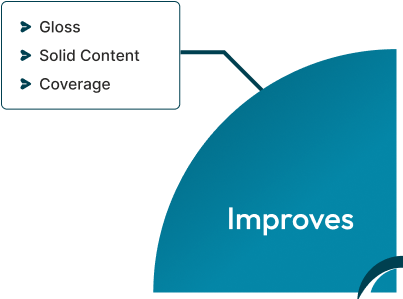
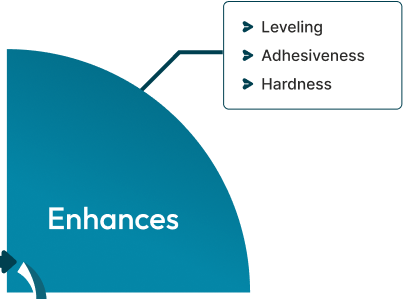
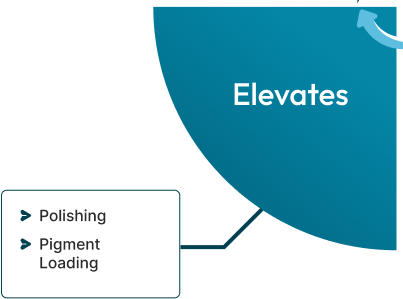
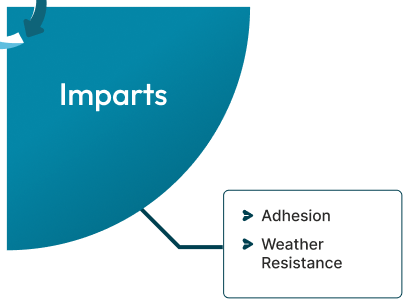
Effect On Formulation
| Product Name POLYTONE® | Viscosity | Reactivity with Isocyanate | Hardness | Gloss & Hardness |
|---|---|---|---|---|
| K 90 | Low | Low | Low | Low |
| K 91 | Low | Low | Low | Low |
| K 93 | Low | High | High | High |
| K 93 LH | Low | Low | Low | Low |
| K 94 | Medium | Medium | Medium | Medium |
| K 95 | Medium | Medium | Medium | Medium |
| K 96 | High | High | High | High |
| K 97 | High | High | High | High |
| K 96 HH | High | Very High | High | Very High |
| K 97 HH | High | Very High | High | Very High |
| Why Use Ketonic Resin? | What is the effect and/or How it imparts? |
|---|---|
| As a Carrier or Binder | Links with Polyol and reacts with Isocyanide |
| As Flow Modifier | OH Value reacts and increases viscosity |
| Corrosion Prevention | Low Acid Value |
| Colour Fastness | Binding Property-Binds Pigment + Solvent |
| Adhesion, Gloss | Improves Adhesion to substrate |
| Increase Solid Content | Resin is solid |
| Levelling | Inherent Property |
| Hardness | Inherent Property |
| Gloss | KR inherent property of gloss is imparted |
| Thermal Resistance | KR increases Thermal Resistance |
| Green or Build Up Strength | KR increases |
| Reduce NCO% | Excess Isocyanide is consumed by KR |
-
Inks & Paints: Ketone Resins can be used as co-binders in paints, lacquers, printing inks and other inks. They not only increase the solids content and accelerate drying speed but also improve numerous properties such as hardness, gloss and film build. Adhesion on various substrates is increased, which together with its resistance to hydrolysis, enhances corrosion protection Flexographic & gravure ink formulations, lamination inks, lacquers and paper inks, nitrocellulose paints, varnishes, heat seal coatings.
-
Inks: This resin finds its major use in ball pen inks and calendar inks. In printing inks, such as laminated ink, gravure printing ink, surface printing ink, flexography ink, anti-forgery ink and ball pen ink, adding Ketone Resin ( 2 -15% in ink formula) can improve pigment wetting, lustre , adhesion, printable, solid content and drying time.
Ketone Resin can resolve the problem of poor adhesion on some substrates, such as paper, PE, PP, PET and PVC and it also improves fluidity and adhesion of ball pen ink. It can be used also in food packaging ink. -
Urethan/PU/PUR: Due to high reactivity of OH with isocyanates, POLYTONE® products are widely used in different types of polyurethane systems (PU-PUR) as adhesive, paints, outdoor and indoor floors and other construction applications. Ketonic Resins contain hydroxyl groups are also used for modification of (for example PUR) binders.
Our Ketone Resins ''urethane grade” react easily with mono and di-isocyanates, such as HDI, TDI, MDI and IPDI. Different combinations of polyols and modified ketone resin are used for “PUR system”.
Highly active hydroxyl group can react with isocyanate to improve the resistance to water, heat and corrosion. This technology is used in a wide variety of applications including indoor and outdoor floor coatings. -
Coatings: Heat-Seal Coatings, primer and base coatings, gasoline resistant coatings & nail lacquers, Vinyl Sealers, Vinyl Coatings, It can be called as excellent multifunctional coating additive.
-
Adhesives & Hot Melts: It is very suitable to manufacture nitrocellulose adhesive, which can be used for leather, paper and other similar material. In hot melt systems Ketonic Resin can be used to control viscosity.
-
Pigment Paste: Can be used in pigment grinding and pigment paste with pigment content as high as 50 %
-
Polish & Lacquers: Ketonic resin is useful in the manufacture of PVC lacquers and finishes for the surface treatment of wooden furniture and articles
- Available in 25Kg HDPE Line KRAFT Paper Bags with Anti-Static Liner/Paper Liner or 25Kg HDPE Bags.
- Choice of ISPM 15 Standard Heat Treated/Fumigated Pallets or Plastic Pallets.
- 500Kg/1000Kg Jumbo Bags available as an option.
- Can be stored up to 12 months at temperatures below 30°C.
- Ketonic Resin has a natural property of yellowing over time with no deterioration in chemical property.

Please follow advice and information provided in MSDS. Protective clothing & workplace hygiene measure must be observed at all times.
Detailed MSDS available on request.
Want to Know more!
Get in touch with our experts!!



